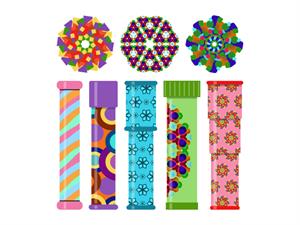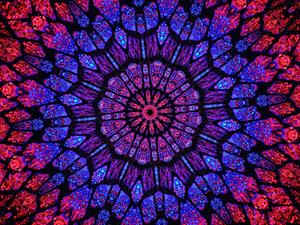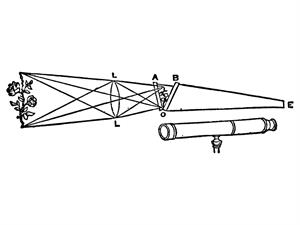PDF chapter test TRY NOW
It is an optical device that works on the principle of multiple reflection of light, to produce numerous patterns of images.
It has two or more mirrors inclined to each other. so that one or more parts of objects on one side of the mirrors are seen as a regular symmetrical pattern when seen from the other end, due to repeated reflection.

A kaleidoscope is an optical device which creates colorful, beautiful patterns due to multiple reflections in plane mirrors.
It is a cylinder with three plane mirrors and loose, coloured objects such as beads or pebbles and bits of glass. As the viewer looks into one end, light entering the other end creates a colourful pattern, due to multiple reflections of these objects in the mirrors.
It can be designed from inexpensive materials. The colourful image patterns formed by this will be pleasing to you.

History of Kaleidoscope:
Kaleidoscopes were discovered in 1816 by David Brewster, a Scottish inventor. Sir David Brewster studied many features of Physical Sciences, which includes Polarization optics and the Light properties. While looking at some objects at the end of 2 mirrors, he saw patterns and colours were recreated and changed into beautiful new arrangements. He reported this new invention after the Greek words meaning beautiful form watcher. "Kalos" the Greek word that means "beautiful", "eodos" means "shape", and "scope" means "to look at".

Applications:
- This instrument is used as a toy for children.
- It produces beautiful patterns that are used by fashion designers.
